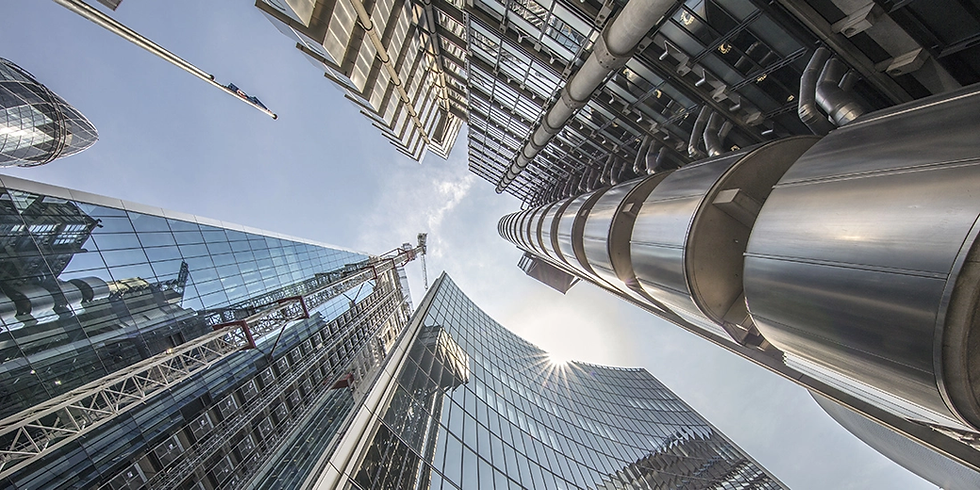How Advanced Cutting Technology Shapes Architectural and Interior Trends
- Staff Desk
- Aug 28
- 4 min read

Clean finishes, seamless transitions, and unique detailing don’t happen by chance. They’re often the result of extremely precise fabrication. That’s where cutting technology steps in. It’s no longer just about getting through materials.
It’s about doing it cleanly, quickly, and with total control. Whether you’re working with recycled steel or composite panels, today’s advanced systems let you cut more accurately with less waste. The payoff? Better builds and happier clients. In fact, industry reports show that better cutting systems have helped reduce total project delays in complex architectural builds by nearly 30%.
In this article, you’ll discover how this technology is helping shape new trends in both architecture and interior design while pushing creative limits.
Cleaner Cuts Create Bolder Designs
Architects and designers always think big. But turning an idea into a finished structure takes more than creativity. Advanced cutting systems such as waterjet, laser, and plasma help make those ideas real. These tools deliver smoother edges, tighter tolerances, and cleaner finishes across a wide variety of materials.
Consider detailed metal panels, perfectly slotted glass walls, or seamless wood features. All of these are easier to create now, even on a tight schedule. What once required hours with traditional tools can now be completed in minutes, and the end result is even better.
Because of this, designers have more freedom to explore complex ideas without worrying about the feasibility of their details.
Materials Stay Light but Strong
Modern architecture often aims for a light, open feel both in appearance and in structure. This is where cutting technology becomes especially valuable. It allows materials to be trimmed and shaped in ways that reduce weight while keeping their strength.
This advantage is very clear when working with metals like aluminum. Using high-precision plasma tools for cutting aluminum helps fabricators design detailed parts that are strong yet lightweight. Whether the job involves cladding, ceiling panels, or custom furniture, these materials meet code requirements while still looking refined.
Another benefit is improved temperature control during cutting, which protects the finish and reduces the need for cleanup or refinishing. That means fewer steps and faster progress overall.
Customization Becomes Simpler
Clients today expect spaces to feel personal. Whether you're designing a boutique hotel or a residential loft, they want something tailored to them. That means unique wall panels, one-off facades, and decorative elements they won’t see anywhere else.
Thanks to CAD-powered cutting machines, creating custom pieces is much faster and easier. You are no longer stuck using whatever a supplier has in stock. Now you can shape your design straight into materials such as stone, wood, acrylic, or metal.
This approach shortens the time between the idea and the finished product. It also improves accuracy, helping you deliver exactly what you envisioned.
Sustainable Practices Improve
Design must be responsible, not just attractive. Advanced cutting tools make that easier. They reduce waste by increasing accuracy. With fewer mistakes and less material wasted, projects become cleaner and more efficient. You can also maximize sheet usage by nesting shapes closely together, making the most of every piece.
This is a major benefit when working with recycled metals or expensive natural materials. A wrong cut is not just inconvenient; it’s costly. By using CNC and plasma cutting tools, errors become rare and sustainability gets stronger.
Some systems even use less energy and control dust more effectively, which protects both workers and the environment.
Interiors Become More Expressive
Cutting equipment isn't only for support structures. It also helps shape interior elements that stand out. Think of decorative screens, custom light fixtures, and artful room dividers. These details once took hours of skilled labor. Now they can be created quickly, even in tough or delicate materials.
You no longer have to choose between affordability and creativity. Something that once felt out of reach due to time or budget is now easier to achieve.
People remember these touches. They help define the mood of a space, show off personality, and add layers of depth. And now, you can produce them without stress or compromise.
Communication Gets Easier
Everyone working in design knows the struggle of miscommunication. When your cutting process is digital, that frustration fades. You can share design files directly with fabricators. Changes happen quickly. You avoid delays caused by vague drawings or unclear expectations.
Most importantly, you can trust that what’s made will match what you designed. This kind of reliability keeps projects on time and reduces costly revisions. It also allows you to focus on creativity rather than damage control.
Final Thoughts
Good design needs more than vision. It needs the right tools behind it. Advanced cutting technology gives you the precision to turn ideas into real spaces with fewer mistakes and stronger results. Whether you're shaping something bold or something subtle, this tech helps you get there faster and more efficiently. As design continues to evolve, these tools are helping professionals create spaces that are thoughtful, functional, and uniquely built for the people who live and work in them.



Comments